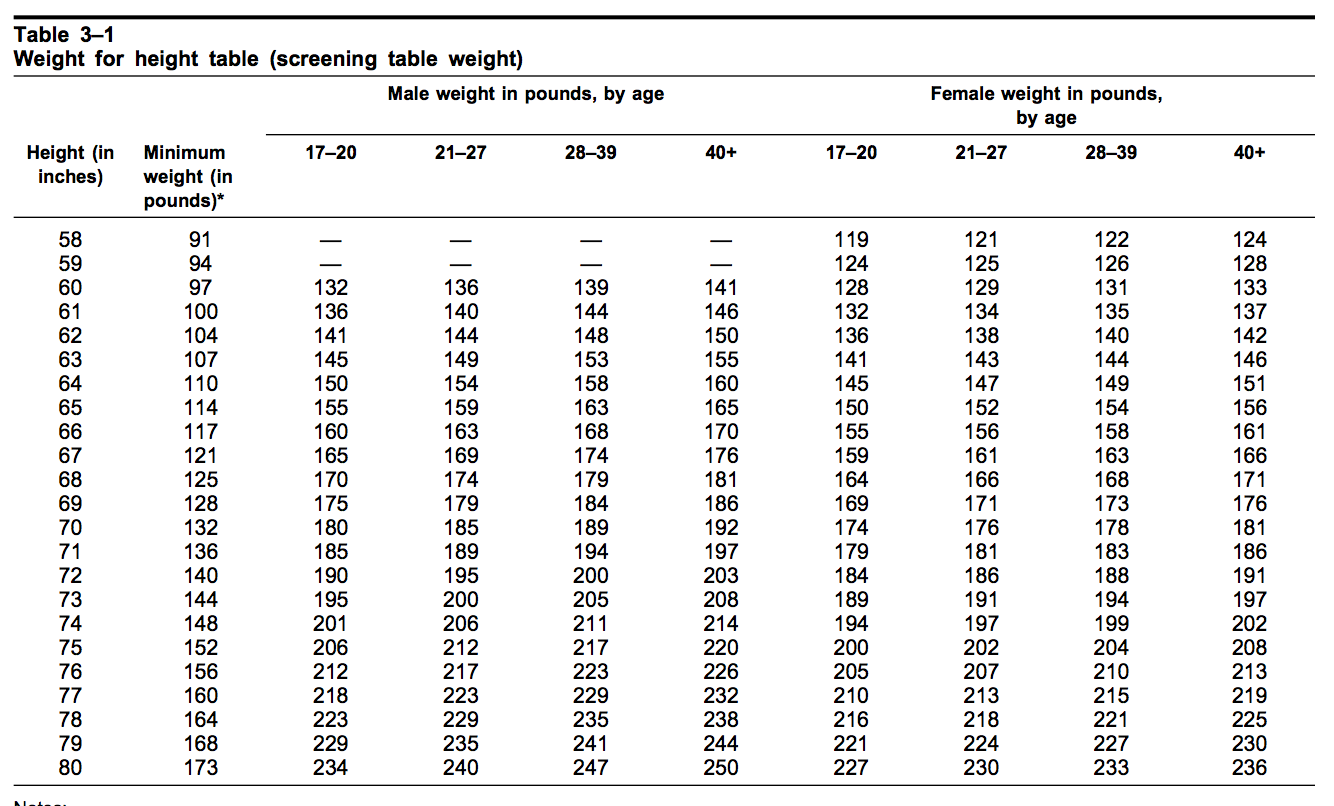Understanding the height and weight requirements for army enlistment is crucial for those aspiring to serve their country. These standards ensure that all soldiers are physically fit to handle the demanding nature of military duties. In this article, we will delve into the specific height and weight parameters, their importance, and how they can affect your eligibility for joining the army.
The military has set forth these requirements to maintain a high level of physical readiness among its personnel. This guide aims to provide detailed insights into what potential recruits can expect. We will cover the various factors that come into play, including age, gender, and the branch of the military. By the end of this article, you will have a thorough understanding of what is required to meet the army's physical standards.
Whether you are considering a career in the army or simply want to learn more about these requirements, this article is designed to equip you with the knowledge you need. Let’s dive into the specifics of height and weight requirements for army enlistment.
Table of Contents
- Height and Weight Requirements
- Importance of Physical Standards
- Factors Affecting Requirements
- Branch-Specific Requirements
- Age and Gender Considerations
- Body Composition Standards
- Measuring Techniques for Height and Weight
- Consequences of Not Meeting Requirements
Height and Weight Requirements
The army has established specific height and weight requirements that potential recruits must meet to enlist. These requirements can vary slightly between different branches of the military and may also depend on the recruit's age and gender. Here are the general standards:
- Minimum height: 60 inches (5 feet) for females and 64 inches (5 feet 4 inches) for males.
- Maximum height: 80 inches (6 feet 8 inches) for males and 74 inches (6 feet 2 inches) for females.
- Weight standards are determined using a weight-for-height chart.
Recruits must fall within the designated weight range based on their height. If they exceed the maximum weight, they may be required to undergo additional assessments, such as body fat measurements.
Importance of Physical Standards
Maintaining physical fitness is paramount in military service. The height and weight requirements serve several important purposes:
- Operational Readiness: Soldiers must be physically capable of performing a variety of tasks, often under extreme conditions.
- Health and Safety: Being within the prescribed weight limits helps minimize health risks associated with being underweight or overweight.
- Team Cohesion: A physically fit army contributes to stronger teamwork and overall mission success.
Factors Affecting Requirements
Several factors can influence the height and weight requirements for army enlistment:
Age
Age plays a crucial role in determining acceptable height and weight standards. Younger recruits may have slightly different standards compared to older applicants.
Gender
The standards are also gender-specific, reflecting the physiological differences between males and females. This ensures a fair assessment for all potential recruits.
Branch-Specific Requirements
Different branches of the military may have varied height and weight standards. For example:
- Army: Generally follows the standards mentioned earlier.
- Navy: May have slightly different height and weight requirements.
- Air Force: Focuses on overall body composition in addition to weight and height.
Age and Gender Considerations
As mentioned, height and weight requirements differ based on age and gender. Here’s a closer look:
Age Groups
Recruits are typically categorized into age groups, and the weight standards are adjusted accordingly. For instance:
- 17-20 years: Stricter weight limits.
- 21-27 years: Moderate limits.
- 28-39 years: Slightly relaxed standards.
Gender Differences
Weight limits are set lower for females due to physiological differences, ensuring that all recruits are assessed fairly based on their capabilities.
Body Composition Standards
In addition to height and weight, the military assesses recruits based on body composition. This includes:
- Body Fat Percentage: Recruits must maintain a body fat percentage within acceptable limits.
- Waist Measurement: Waist circumference may also be measured to ensure overall fitness.
Measuring Techniques for Height and Weight
Accurate measurements are crucial for determining eligibility. Here’s how the measurements are typically taken:
- Height: Measured without shoes on a flat surface, with the heels against the wall.
- Weight: Taken on calibrated scales, preferably at the same time of day.
Consequences of Not Meeting Requirements
Failure to meet height and weight standards can have significant implications:
- Disqualification: Potential recruits may be disqualified from enlistment.
- Increased Scrutiny: Those who are close to the limits may face additional evaluations.
- Physical Training: Recruits may be required to undergo physical training programs to meet standards before enlistment.
Conclusion
In summary, understanding the height and weight requirements for army enlistment is essential for anyone considering a military career. These standards are in place to ensure that all soldiers are physically prepared for the challenges they will face. By adhering to these requirements, potential recruits can enhance their chances of successful enlistment and a rewarding career in the army.
If you found this article informative, we encourage you to leave a comment or share it with others who may benefit from this information. Additionally, feel free to explore other articles on our site for more insights into military life.
Penutup
Thank you for reading! We hope this guide has provided you with valuable information regarding the height and weight requirements for army enlistment. We invite you to return for more articles and insights that can help you on your journey.




